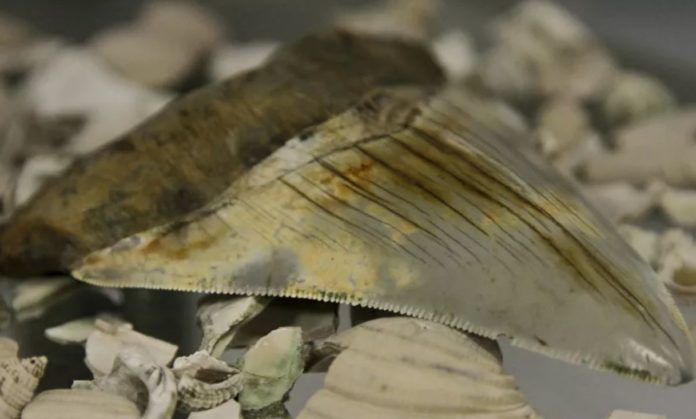The extinct megalodons were the largest sharks that existed in the waters of our planet. At birth, these sharks were already larger in size than most humans. A new study has revealed the secrets behind the large size of these animals.
Megalodons (Otodus megalodon) lived approximately 15 to 3.6 million years ago. Its body could measure up to 15 meters long, that is, they were between three and four times larger than a white shark.
“As one of the largest carnivores to ever exist on Earth, deciphering such growth parameters for O. megalodon is critical to understanding the role large carnivores play in the context of the evolution of marine ecosystems,” says Kenshu Shimada, a paleobiologist at DePaul University in Chicago and the study’s lead author.
Although megalodons have a rich fossil record, their biology remains poorly understood since the remains found of these cartilaginous fish are, for the most part, teeth. However, there are some remains of its giant vertebrae available to scientists and it was precisely helped shed light on the size of Otodus megalodon.
By studying the vertebrae of a megalodon, estimated size to be 9 meters, scientists discovered that the specimen was already a large fish at the time of its birth. When analyzing the remains in question with the help of a CT scan, the scientists found that the specimen was two meters long at birth. The findings suggest that the megalodon possibly gave birth to the world’s largest babies of sharks, EurekAlert details.
- Does This Mean We Stopped Being Animal and Started Being Human Due to ‘Copy Paste’ Errors?
- The One Lifestyle Choice That Could Reduce Your Heart Disease Risk By More Than 22%
- Aging: This Is What Happens Inside Your Body Right After Exercise
- Immune-Boosting Drink that Mimics Fasting to Reduce Fat – Scientists ‘Were Surprised’ By New Findings
- Gun Violence in America: What They Don’t Talk About at the Debate
Although most of today’s sharks lay eggs, some give birth to their young, as was the case with the megalodon. They are lamniform sharks. While it has previously been proposed that warm blood is what has caused gigantism in several lamniform sharks, the new study proposes that what is behind the megalodon’s size was its breeding strategy and cannibalistic behavior.
The new study suggests that, like some current lamniform, the embryonic megalodon grew inside its mother by feeding on the eggs that its siblings contained, but had not yet hatched in the womb. The practice, known as oophagy, is a form of intrauterine cannibalism.
The result of such cannibalistic behavior is that only a few embryos survived and developed, but each of them was of considerable size already at birth. Thus, newborn megalodons had an advantage from the first day of their life, since their large size reduced the chances of them being eaten by other predators.
“The results of this work shed new light on the life of megalodons, not only how they grew, but also how their embryos developed, how they gave birth and how long they could have lived,” says Martin Becker, co-author of the study.
